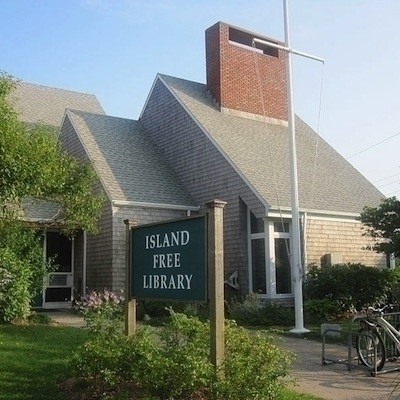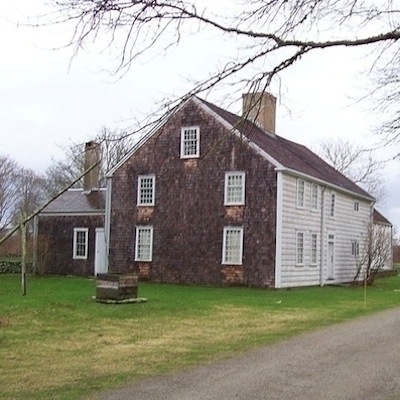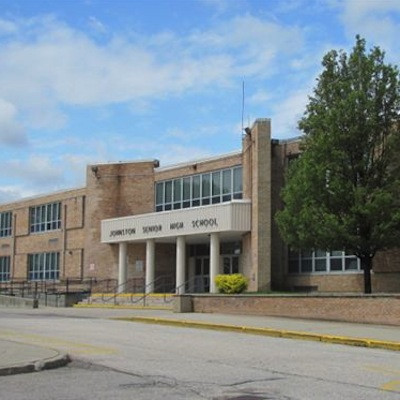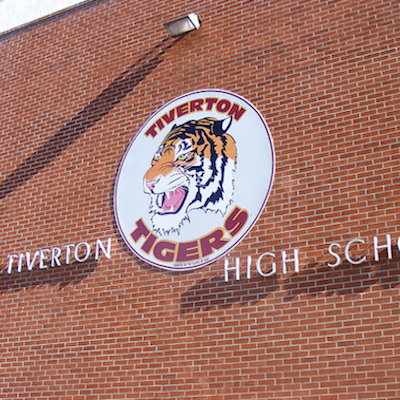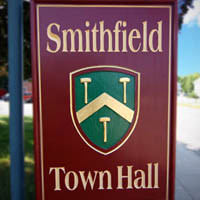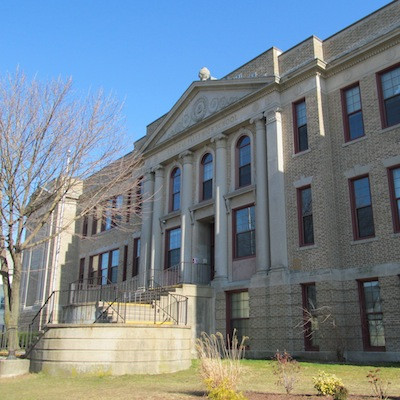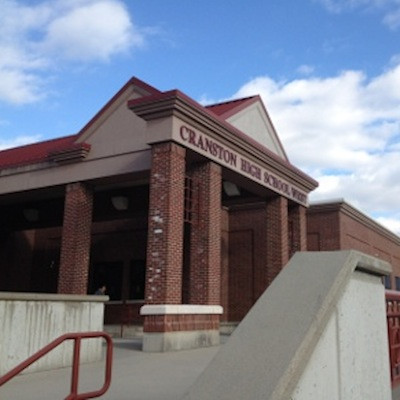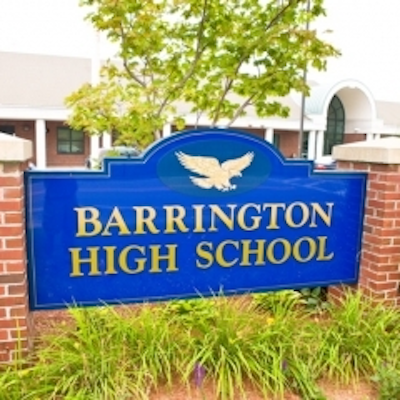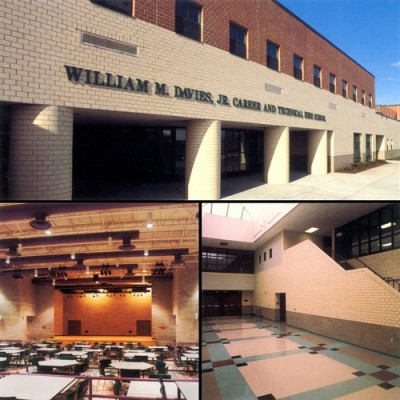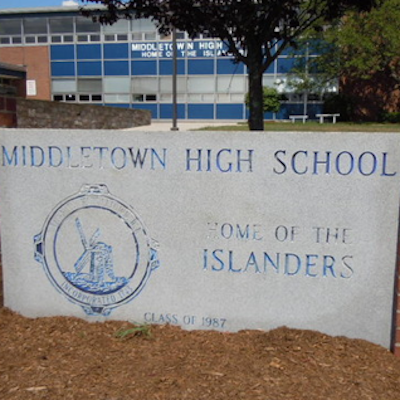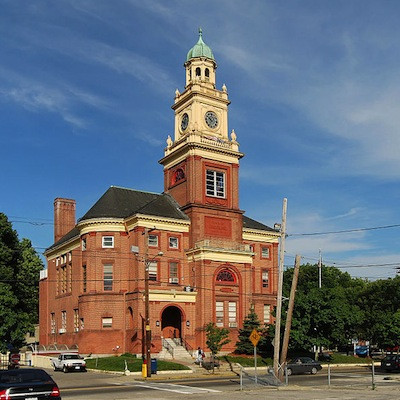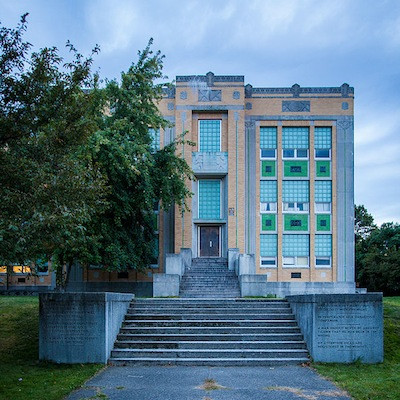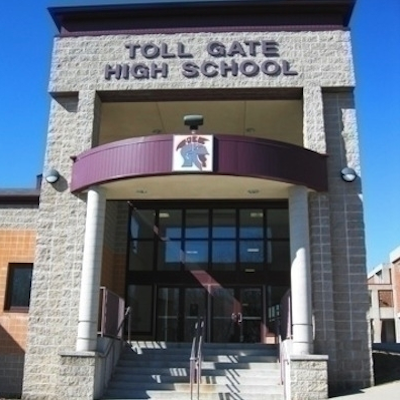Carol Anne Costa: Is Lockdown in Suburbia the Sad New Normal?
Thursday, February 27, 2014
Let’s hope not. In what I know was a parent’s worst nightmare, the reality of our new world visited Smithfield High School this week. Some young people in my life attend the school, and I remain close to them and their parents. My thoughts immediately turned to the horrible moments that must have taken place during this stressful situation. I only learned about it on my ride home from work via radio reports. By then the ordeal was over and thankfully with no intruders, gunfire, explosives, or tragic results.
Make no mistake; the reports alone evoked the emotions and terrifying thoughts in my mind. Rational thoughts were supplanted with the harsh awareness that our society can no longer bank on the safety of a schoolhouse. That is the sad, true, and sobering reality—a new normal, if you will. But the situation that developed does pose some important questions. Are we doing lockdowns correctly? How does RI rank in the safety protocols? What is the impact of these active shooter scenarios on our families and education professionals? Many safety experts disagree on the tactics and also question the practice of instructing our children to hide in corners if the unthinkable happens, but should this be revisited? Perhaps the Smithfield story opens a door for a more analytical discussion about these practices and also creates an opportunity for improvement.
A parent’s nightmare
My friends shared their feelings with the in the wake of the circumstances. Hearing directly from them and personally knowing a child impacted solidified for me what must have been an eternal 3 hours for so many families. Their emotions were raw and although they communicated with me via text, the urgency and sense of complete lack of control reverberated with every keystroke. In her description of events, my friend shared this with me after she learned of the lock-down.
GET THE LATEST BREAKING NEWS HERE -- SIGN UP FOR GOLOCAL FREE DAILY EBLAST“At 2:12 PM I texted my daughter’s friend (I could not reach my child) and she happened to be next to my daughter. She indicated the entire class and teacher were hiding in the stage curtain in the auditorium. The teacher was keeping them still and quiet and many of the kids terrified and crying. The art class was in the auditorium painting a set for the school play. A SWAT person with a really huge gun entered with four other officers shouting, ‘We are on lockdown! This building is not secure.’”
This frightening communication between a student and a parent is a mere clip of the many messages that must have been hurtling through cyberspace, increasing the anxiety of every recipient. I don’t know about you, but just reading that text makes me shiver.
My friends also shared with me the agonizing time spent waiting for answers. My friend said in a text to me, “We were a mess, I was shaking, my husband could barely breathe and we could not look at each other for fear we would fall apart. We contacted other parents who were going through very much the same thing. This was horrible.” I hope all the children, teachers, staff and parents impacted are given ample time to process this shock to the system. We must figure this into our responses as we fashion a more effective approach.
RI fares well in school safety
The news for RI is pretty good as it relates to school safety. In the wake of the Columbine shooting, the nation learned new methods involving active shooter scenarios and shortly after the Newtown tragedy, education systems and political leaders nationwide reexamined policies, procedures, and overall school preparedness in the event of similar assaults. In an article published by Security Director News in October of 2013, RI was held up as a national model. Quoting a safety expert, “States looking to overhaul their school emergency plans should turn first to Rhode Island, says Michael Dorn of Safe Havens International. “We’d have a lower death rate in this country if they did.” Commissioner Gist was also quoted in the story. “Rhode Island focuses on preparation such as drills to keep its schools safe. Rhode Island mandates routine drills spaced out across the school year. The goal is to make it more of a regular experience for our teachers and kids,” she said. “Fundamentally, the promise we need to make to our families is that, every day, when their students come to our schools, they are safe.”
Not everyone agrees
But the news from the safety experts is sometimes at odds. A group called ALICE has emerged from these disasters and is questioning whether a lockdown is enough anymore.
ALICE (Alert, Lockdown, Inform, Counter, and Evacuate) is training solution that purportedly increases the odds of survival during a violent intruder event. Developed after the Columbine, Virginia Tech, and Sandy Hook invasions, it is a strategy that goes beyond the conventional lockdown. Some parents I have spoken with are at the very least willing to listen to the method as an enhancement of tactics available to our kids. I trust that if you questioned some of the kids hiding in Smithfield High School this past week, they may want to hear about this as an alternative as well. I have talked to the children in my life and right after a lockdown drill more than a couple people say something like, “I feel like a sitting duck.” Perhaps we need to incorporate or seriously investigate more than the traditional response going forward. Maybe this incident can help to garner fresh information from the people involved—both from the students and teachers inside and the loved ones outside—thereby adding on the ground voices to the evolving doctrine.
In the General Assembly
In RI Legislators, Governor Chafee, Chafee's Cabinet Heads, and Commissioner Gist have taken proactive steps to protect our children in the schoolhouse by forging a model plan. This collaborative approach is comprehensive and brings in leaders on many levels. Additionally, a package of bills—designed to empower schools to be more aware and in ready position in the event of an assault—will continue to be forged in this session. The bills will strengthen the existing statute entitled Health and Safety of Pupils. The bills are championed by Senator Hanna M. Gallo (D-Dist. 27, Cranston, West Warwick), Chair of the Senate Committee on Education, and Representative Joseph M. McNamara (D-Dist. 19, Warwick, Cranston), Chair of the House Committee on Health, Education and Welfare. According to the press release, the intent of the package is to address several areas including:
- Require the Department of Education to create best practices for school safety plans to share with school districts, as well as checklists that districts can use to assess strengths and weaknesses of their safety plans
- Direct school districts to conduct a school safety assessment in conjunction with local municipal police and fire departments
- Amend and expand the requirements as to what must be in each school district's school safety plan; Support better communication among first responders and within schools by emphasizing the use of plain language in emergency situations; Codify the need for closer collaboration among RIDE; the Department of Behavioral Health, Developmental Disabilities and Hospitals; Emergency Management Agency, State Police, State Fire Marshal and other safety officials
- Allow school committees to review school safety plans in executive session to provide a further level of security for students and school employees; Set details and specifications regarding the type, manner and frequency of safety drills in educational facilities.
It is refreshing to know that Rhode Island is on the cutting edge of these school safety issues. But for me this is a constantly evolving body of responses, legislation, and dialogue. And this evolution is a priority as it involves the once-sacred and safe haven that is a schoolhouse. We must all get reinvested, as the health and protection of our most precious resource may be—literally—in the cross-hairs.
Carol Costa is a public relations and community outreach specialist; she has experience in both the public and private sectors. She is the Chairwoman of the Scituate Democratic Town Committee and has extensive community affairs and public relations experience. She previously served in the Rhode Island Judiciary for nearly 17 years. Carol also enjoyed a successful development stint at the Diocese of Providence as Associate Director for Catholic Education and is currently the Executive Director of the Warren Housing Authority. Her work has been published in several local outlets including GoLocal, Valley Breeze, The Rhode Island Catholic, and Currents Magazine.
Related Slideshow: Rhode Island School Superintendent Salaries
Below are the salaries of school superintendents in Rhode Island, starting with the lowest paid. Data is for 2013 and was provided by the state Division of Municipal Finance. Where relevant, longevity pay is also listed. All school superintendents are listed except those in the independent school districts in Foster and Glocester. The combined Foster-Glocester district is included. In order to provide a more informed basis for comparing superintendents from one community to another, the annual student enrollment and total expenditures are also listed. (The data is for fiscal year 2012, the latest available from the state Department of Education.)
Related Articles
- Carol Anne Costa: American Politics Needs Women More Than Ever
- Carol Anne Costa: I Heart My Farmer…And So Does the Farm Bill
- Carol Anne Costa: RI’s Naughty and Nice
- Carol Anne Costa: Baseball, Blowhards and Baloney
- Carol Anne Costa: Is Lockdown in Suburbia the Sad New Normal?
- Carol Anne Costa: Race + Justice Collide Again in America’s Courts
- Carol Anne Costa: Disparity & Self Honesty
- Carol Anne Costa: Let Baby Messiah Keep His Name
- Carol Anne Costa: Sexual Assault Can Happen to Anyone
- Carol Anne Costa: Every Day Is Veterans Day
- Carol Anne Costa: Malala Keeps Her Eye on the Real Prize
- Carol Anne Costa: Syrian Crisis Makes Strange Bedfellows
- Carol Anne Costa: Exeter’s Recall- Why the People Won
- Carol Anne Costa: Nina Davuluri: Beauty and the Beasts
- Carol Anne Costa: Telling The Truth About The Navy Yard Shootings
- Carol Anne Costa: Fables, Foibles and Fools: Can DC Be Fixed?
- Carol Anne Costa: Open Mic, Insert Foot
- Carol Anne Costa: Voice of Democracy, VFW’s Homerun
- Carol Anne Costa: Guess Who’s Coming to the State of the Union?
- Carol Anne Costa: Political Redemption, Rhode Island-Style
- Carol Anne Costa: Where Would JFK Fit Into Modern Politics?
- Carol Anne Costa: A Rhode Island Thanksgiving
- Carol Anne Costa: Have A Coke and A Big Glass of Intolerance
- Carol Anne Costa: Primaries, Process, and Poll Workers
- Carol Anne Costa: Women Swimming Upstream…This Time With An Ally




